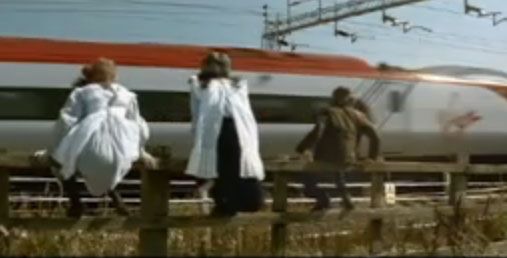The rule of “Blink” (Blink By Malcolm Gladwell) tells us that many of the choices we make are made instantaneously (at the blink of an eye), and that we have no real idea of how we came to make such choices.
What’s particularly interesting is that often these decisions are actually better than more-thought-out and analysed choices: our intuition is often right. However, our intuition can also let us down since it is affected by unknown preconceptions and beliefs. As Malcolm Gladwell illustrates in his book, these can be very deep-seated prejudices which we honestly do not believe we subscribe to: he showed examples connected to race and gender, which ably illustrate the problems of overcoming subconscious prejudgment.
What, you might reasonably ask has this to do with transport? It depends on what deep-held beliefs exist which subconsciously affect how we think about different forms of transport. Since they are subconscious, by definition they’re not always easy to identify and projective research techniques are sometimes the only way to uncover them.
However, some have been exposed and are widely recognised. For example, perceptions of who uses buses and who you might end up sitting next to are now so well exposed they’re a cliché and, paradoxically this has in all likelihood reduced its influence on decision making. Many of the beliefs about cars have also been identified and are ruthlessly exploited by car manufacturers. However, Virgin Trains also managed to do the same for rail travel for which many people have a soft spot for, despite lingering issues about British Rail sandwiches.
Honda's Power of Dreams campaign
Virgin's Return of the Train campaign For walking and cycling the issue is quite different and influences whether they are thought of as an option at all. For many, cycling is seen as a leisure pursuit rather than a mode of transport. While it evokes fond memories, it is associated with childhood and cycling in the park, and at best it might be seen as a way of getting to school. However, there is a big leap from seeing cycling in this light to seeing it as a serious method of travelling to work or the shops. Thus, the divide between cyclists and non-cyclists can be characterised as the difference in deep-seated perceptions of cycling as a means of transport.
There is a similar challenge for walking, related to the underlying beliefs as to the role of walking, and also with perceptions of distance and an ‘acceptable’ walking distance. For the majority, walking is seen as a leisure activity (perhaps something to do at the weekend), or a means of accessing a ‘real’ mode of travel like the car, bus or train. This creates a subconscious and artificial limit on the length of trip for which people will consider walking as an option.
So how can these deep-seated beliefs be challenged? Well, not by making a direct challenge: this runs the risk that people won’t recognise this issue as applying to them personally. Instead, the aim is to make the desired behaviour seem normal and perhaps a little aspirational. In this respect, the recent TfL adverts for cycling in London are to be applauded: they show ordinary people (alongside some celebrities) cycling round London and saying something about their own stories. They do not try to preach, to sell or educate.
Perhaps the primary lesson to learn from Blink is that, since most decisions are made at a subconscious level, if we are to change behaviour we also need to consider what’s happening at this level, what invisible barriers there might be, and how they can be overcome.

